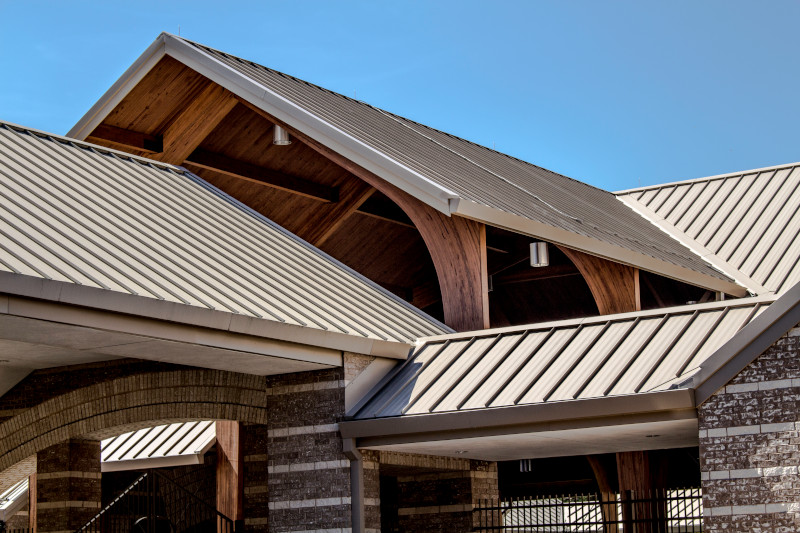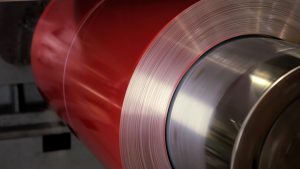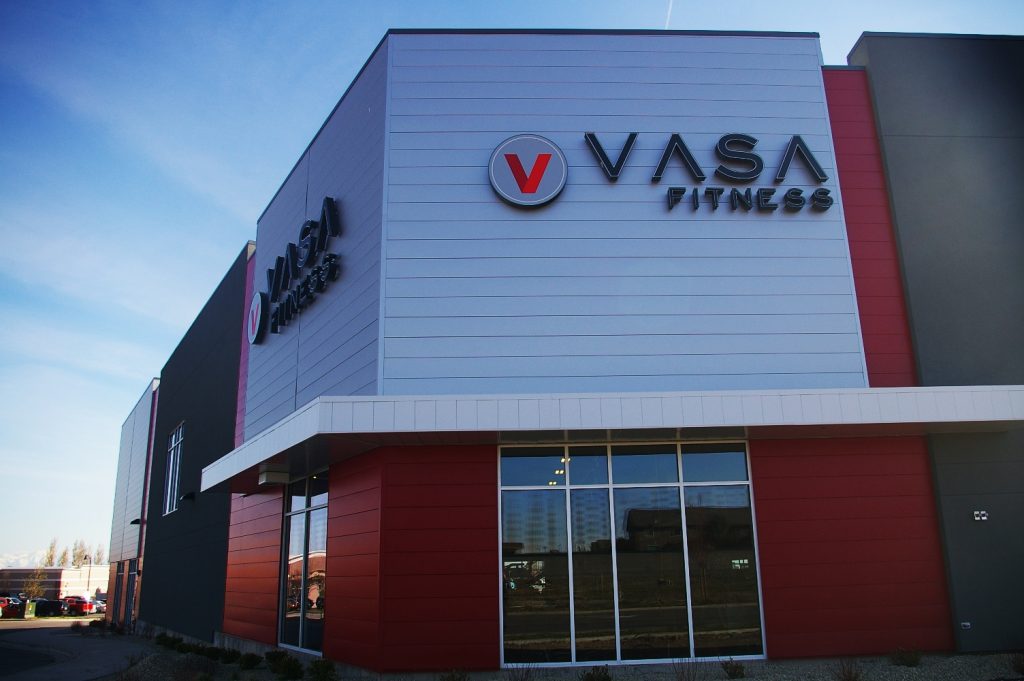Pre-painted Metal


Whether it is wind speed, sun exposure or the proximity to a coastline, these factors would be the major considerations when choosing metal roofing for a project in coastal areas. The good news is that metal panels can be used in just about any coastal area so long as you find the right product profile and finish that meets your specific requirements to maximize performance given the variables of the environment.
There are a number of special considerations given the environmental conditions inherent to a coastal area, including the impact to paint systems and certain unique maintenance requirements, wind ratings, hurricane conditions and certifications/regulatory product approvals that will limit the panels you can you use within specific coastal areas, for instance Dade County, the state of Florida, and the Texas Coast.
Metal components can be a great roofing choice, even in a coastal area, whether a bay, gulf, or ocean water. Key is how you manage the finish on the products and how close you are to the actual salt environment. Simply stated, if you’re outside of a 1,500-foot range from the coastline or salt water, then standard metal roofing would be suitable, but if you’re closer to the coastline there are special paint options or finishes you’d need for the product to withstand the coastal environment.
At MBCI, we use Flurothane Coastal coil coating system* as our standard solution to the challenge of salt spray and harsh coastal environments. This coating is a premium fluoropolymer (PVDF) system developed for use in the most extreme coastal environments. This system is unique in its use of an innovative thick film primer. The two-coat system has a total dry film thickness (DFT) of 1.7 to 2.0 mils.
Choosing an appropriate coastal finish can also affect your product’s warranty. If, for example, your project is within the 1,500-foot range and you don’t choose the required coastal finish, if the panels were to rust there would be no warranty offered and it could affect your warranty for weathertightness as well.
Overall, roof failures are the largest hurricane loss due to wind and water damage. For this reason, metal roofing is a highly recommended option for coastal regions where hurricanes and high force winds are prevalent. The appropriate metal panel type for these areas is mainly contingent upon what you want to accomplish. Because MBCI does have high wind ratings for most of our panels, whether it be a screw down (aka through-fastened) panel or a standing seam profile panel, selections should be determined by the complexity of the roof itself and the roof conditions. There are standing seam panels and through-fastened panels that can be approved for both roof and wall applications in many coastal areas.
Also, of note, different types of coastal areas may receive higher wind speeds. There is obviously a wide difference in wind speeds between the East Coast and the West Coast, for example, although both are coastal communities. In an area with higher wind speeds and/or hurricane conditions, you would want to consider panels that achieve higher wind ratings. Since there are many different panel options, and some may not be able to achieve as high wind ratings as others, you should look at what those values would be for wind and what testing has been done. MBCI’s metal wall panels and roofing systems are able to resist and withstand extreme environmental conditions, such as those in Florida or the Texas coast where strict product approval and testing processes are required.
MBCI has panels that meet requirements for Florida Approval, Dade County and Broward County for instance, where you need to have an NOA (Notice of Acceptance) for those county areas, as well as products that are TDI approved (Texas Department of Insurance), which is usually seen in the Texas coastal area.
Additionally, sun exposure and color can have an impact as far as solar reflectance, so that is another consideration. Somewhere like Florida gets a lot of sun yet a coastal area in Washington State would be mostly cloudy. If you are in an area that has more sun, then you may want to consider a panel with a higher solar reflectance value.
If you have metal roofing in a coastal area, you’re going to follow much of the same maintenance as you would on any metal roof, but you would want to inspect it for damage, especially after a wind event or storms. One of the main differences, though, especially if you’re within the 1,500-foot limit where you needed a special finish, is that you’re going to have to do a fresh water rinse regularly on the panels a couple of times a year. What this means is you are basically hosing it off with fresh water to get the potentially corrosive salt spray residue off of it.
For more on metal roof and wall panels and finishes for use in coastal areas, contact your local MBCI representative.
* (1) All substrates must be properly pretreated. (2) American Society for Testing and Materials. (3) Flurothane Coastal system is not designed to bridge cracks in the substrate. (4) Varies by color. (5) Flurothane Coastal system will generally meet the requirements for most post-painted fabrication processes. However, variations in metal quality, thickness or cleaning/pretreatment applications can lead to diminished flexibility.
SOURCE: Valspar Corporation
Design and color trends in metal roofing products are not exactly black and white. In fact, a whole host of options are available when choosing textures and colors for new metal construction projects, depending on specific criteria. Some are practical, some are aesthetic—but all are shaping how designers are specifying metal products, coatings and paints. Let’s walk through a few of the top trends in the industry now.

It used to be that coil options were limited to standard stock choices and availability was determined by the coil coaters. Now, with evolving industry strategies, such as NCI’s vertical integration, many more manufacturers are properly positioned to enter into the market with multiple color choices across multiple brands without as much deviation. This also allows manufacturers to quickly adapt to requests for custom colors—both internally or externally.
Moreover, color requests based on aesthetics and paint systems have evolved based on changing code requirements. For additional benefits, specifiers can turn to many rating systems, such as the Cool Roof Rating Council and ENERGY STAR®, as well as earn LEED points by having specific SRI (Solar Reflectance Index) values.
Much has changed over the past 10 to 15 years. For instance, the components industry has evolved from customers merely selecting colors based on preference to a more integrated approach accounting for aesthetics, cost and energy efficiency. Today, owners and architects are more likely to consider a color such as Solar White to save on insurance or receive tax rebates. Environmental considerations and regulations have changed the way customers purchase steel, incorporating such issues as unique regulations for different states and weather conditions, LEED points and reflectivity into the atmosphere.
Another design trend in the industry is a move towards insulated panels, mimicking what is typical in the aluminum composite material (ACM) world. High-end car dealerships are known for design with ACM. This includes blocked-off designs that can be elongated, can be different colors or have joints in different places. This application has been ACM’s primary wheelhouse for decades. Now that ACM manufacturers have entered into the insulated metal panel (IMP) industry, more of the design community is considering a thinner, horizontal IMP. The intention is to replicate the appearance of an ACM panel, while reaping the major cost and insulating benefits of IMPs.
Architecturally, more metallic paints are being used. Historically, metal panels were white, tan or Galvalume. The current trend has expanded to a wider color palette, including mica fluoropolymer. These metallic coatings give depth to the color, adding sheen and sparkle. In fact, there are actually metal flecks in the paint. Metal oxide-coated mica pigments offer up the metallic look and add to the durability.

What’s behind this trend? Designers are thinking about metal roofs in a whole new way. They are looking to leverage colors and properties of paint to bring out a unique architectural appearance not previously available.
Trends in metal construction are as broad as the choices of color and coatings. Whether a reaction to energy savings criteria or simply a desire of an educated consumer to bring new life to their project, it’s worth taking the time to investigate all your options when specifying your next metal project.